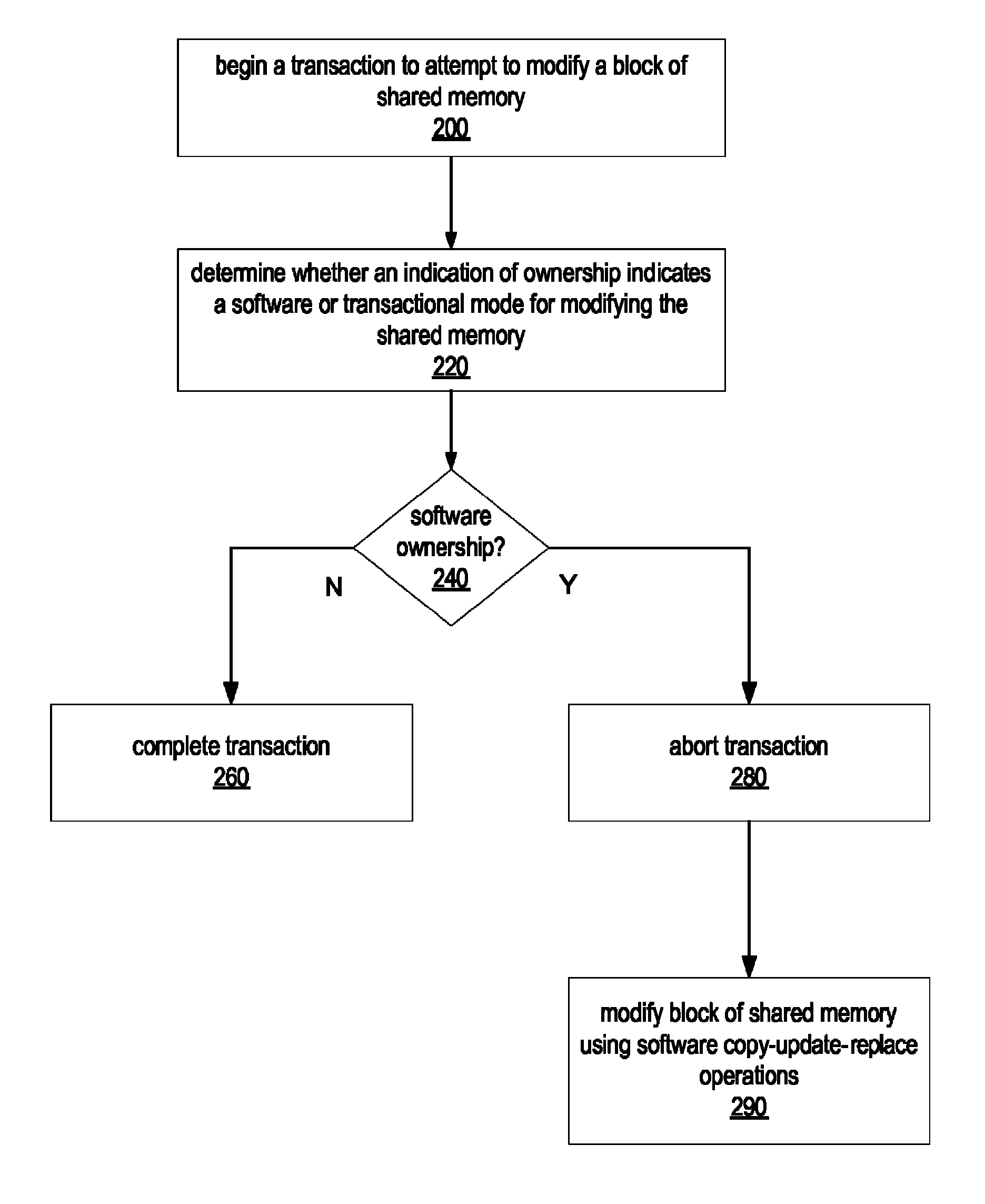Coordinating accesses to shared objects using transactional memory mechanisms and non-transactional software mechanisms
a technology of transactional memory and shared objects, applied in the direction of program control, multi-programming arrangements, instruments, etc., can solve the problems of affecting performance, affecting performance, and affecting performance,
- Summary
- Abstract
- Description
- Claims
- Application Information
AI Technical Summary
Benefits of technology
Problems solved by technology
Method used
Image
Examples
Embodiment Construction
[0028]As noted above, transactional memory (TM) may be used in conjunction with various software synchronization mechanisms that copy a current version of an object, update the copy, and then cause the copy to become current atomically by changing a “current version” indicator. For example, a pointer to an object in memory may be considered a “current version” indicator since it may be updated to point to a modified copy of an object, thereby making the modified copy the “current” version of the object. In general, a collection of data (perhaps an object or a block of memory, but more generally an arbitrary collection of data) may have operations applied to it by threads that:[0029]i) identify the “current” collection of data, perhaps by reading a “current pointer” or “current value identifier”,[0030]ii) copy the identified collection of data to a private area (and in some cases verify that the copy is consistent, retrying if not),[0031]iii) apply changes to the private copy of the ...
PUM
 Login to View More
Login to View More Abstract
Description
Claims
Application Information
 Login to View More
Login to View More - R&D
- Intellectual Property
- Life Sciences
- Materials
- Tech Scout
- Unparalleled Data Quality
- Higher Quality Content
- 60% Fewer Hallucinations
Browse by: Latest US Patents, China's latest patents, Technical Efficacy Thesaurus, Application Domain, Technology Topic, Popular Technical Reports.
© 2025 PatSnap. All rights reserved.Legal|Privacy policy|Modern Slavery Act Transparency Statement|Sitemap|About US| Contact US: help@patsnap.com



